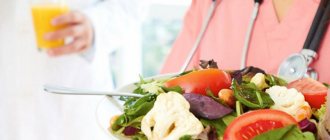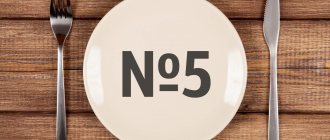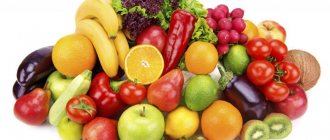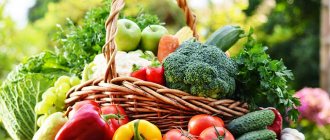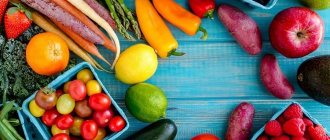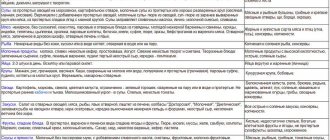Diets
27 July 2021, 13:00
- Diet No. 10: do's and don'ts
- Table number 10: menu for the week
- Diet No. 10: recipes for every day
Dietary table No. 10 according to Pevzner is recommended by specialists for disturbances in the functioning of the cardiovascular system with obvious signs of insufficient blood circulation. The purpose of this table is: optimization of blood circulation and heart functions, normalization of metabolism.
Features of the diet for diseases of the cardiovascular system are a reduction in calories while reducing the amount of fat and a certain part of carbohydrates, a limit in the consumption of salts and liquids. It is necessary to limit foods that cause stimulation of the nervous and cardiovascular systems and an irritating effect on the kidneys and liver. Products must contain the amount of potassium and magnesium necessary for the body.
Particular attention should be paid to the diet for hypertensive patients
Overweight people often suffer from this disease, so table number 10 will help both in maintaining heart health and in getting rid of extra pounds. Diet No. 10 for hypertension should include grapefruits and lemons, since the vitamin C they contain helps strengthen blood vessels, and garlic removes harmful cholesterol from the body. Hypertensive patients are recommended to eat lean meat and fish, low-fat dairy products, vegetarian soups, fruits, and vegetables.
Nutrition for the prevention of cardiovascular diseases must be balanced. The diet must be filled with dietary fiber, vitamins, and healthy fats in the form of omega-3 and omega-6. Limiting the consumption of salt, animal fats, and foods with cholesterol will normalize blood pressure, reduce shortness of breath, swelling, and slow down the progress of atherosclerosis.
Diet No. 10
Characteristics and principles of diet 10
Therapeutic and preventive diet, table No. 10 according to Pevzner, was developed specifically for people suffering from various vascular and heart diseases, including circulatory failure of degrees 1 and 2 A. This diet helps to significantly reduce the load on the walls of blood vessels and the myocardium, so it is often prescribed to people with hypertension, as well as high cholesterol.
A balanced diet helps improve the structural and functional state of the kidneys, as well as accelerate the elimination of excess interstitial fluid, which causes peripheral (cardiac) edema. If a diet is prescribed to patients with high cholesterol levels, then, as a rule, such recommendations are included in a comprehensive plan for spa or hospital treatment.
Unlike other dietary tables, diet No. 10 according to Pevzner has a number of distinctive characteristics:
- The energy value of such a diet varies from 1800 to 2000 calories. The exact calorie content is selected for each patient individually, taking into account the nature and specificity of the disease, as well as the severity of its course. If the pathology of the cardiovascular system is in the stage of compensation, then the calorie intake can be increased to 2300 calories.
- The amount of fat consumed is no more than 70 g per day, and at least 60% of this volume should be vegetable fats.
- The amount of protein consumed is 80 g per day.
- The amount of carbohydrates should not exceed 350 g per day.
- In the diet, plant components containing large amounts of fiber are limited to a minimum.
- The daily volume of fluid consumed should not exceed 1.1 liters.
- The amount of table salt is reduced to 3.5 g, while patients are advised to add salt to ready-made unleavened dishes.
- Fried, heavy, salty, fatty, pickled, smoked and canned foods, which contribute to an increase in cholesterol levels in the body, are completely excluded from the diet. In addition, it is recommended to completely avoid eating store-bought processed foods and fast food.
- The total number of meals is 5-6 times, while meals are consumed in small portions. The last meal should occur no later than 3 hours before bedtime.
Diet Variations
Table No. 10, depending on the disease, has the following modifications:
- Table 10g is used for essential arterial hypertension;
- Table 10b is observed for mild rheumatism or at the attenuation stage;
- Table 10a is prescribed for patients with circulatory insufficiency of 2–3 degrees, as well as for ascites at the recovery stage;
- Table 10p is observed for rheumatoid arthritis;
- Table 10c is appropriate for coronary heart disease, heart attack in the scarring stage, atherosclerosis of blood vessels and brain, hypertension;
- Table 10i is the most gentle and is recommended 1–2 days after bypass surgery.
Also, diet menu No. 10 is useful for abdominal ascites, since the list of causes of the disease includes heart failure, kidney and liver problems, and poor quality nutrition.
Indications
Diet No. 10 according to Pevzner is an integral part of complex treatment for the following diseases of the circulatory and other systems:
- Rheumatism;
- Cardiosclerosis;
- Heart defects;
- Hypertonic disease;
- Peripheral edema and shortness of breath caused by diseases of the cardiovascular system;
- Arrhythmias of various origins;
- Atherosclerotic changes in blood vessels;
- Functional disorders of renal activity;
- Heart failure.
This therapeutic and preventive diet will not only reduce the load on the circulatory system and kidneys, but will also strengthen the entire body as a whole and improve the interaction between all systems.
List of permitted ingredients
Eating the following foods will help reduce the load on the cardiovascular system:
- Any types of cereals cooked with water or with the addition of whole milk.
- First courses with the addition of potatoes, cereals, milk and vegetables from the permitted list. It is recommended to cook first courses in weak vegetable broth.
- Boiled and baked vegetable ingredients. Occasionally it is permissible to eat raw vegetables and herbs. It is recommended to give preference to pumpkin, red beets, carrots, tomatoes, cauliflower, and cucumbers. In limited quantities, it is permissible to consume green onions, parsley and dill, as well as white cabbage.
- Low-fat cottage cheese, homemade kefir and whole milk. It is permissible to consume hard cheese, dairy cream and sour cream in limited quantities.
- Among the meat components of dishes, it is recommended to give preference to turkey, chicken, veal or beef. Fish used for cooking must contain a minimum amount of fat.
- Any berries and fruits can be consumed fresh or dried.
- Ghee, butter and vegetable oil are allowed as a fatty component in moderate quantities.
- Homemade jam, caramel candies, natural honey, fruit and berry jelly, as well as homemade fruit jelly are allowed as sweets.
- As for bakery products, it is permissible to consume bread made from grade 2 and grade 1 wheat flour. Biscuit and diet cookies are also allowed.
- For variety, you can include in your diet steamed egg omelets made from no more than 1 chicken egg.
- As for drinks, it is allowed to consume weak coffee with the addition of whole milk, weak black and green tea, vegetable and fruit juices, as well as rose hips.
What do you need to know to introduce a diet for high cholesterol?
A diet is not just a list of foods that a patient can eat. A diet presupposes a certain way of life, which includes not only a certain diet, but also the observance of several rules, without which proper nutrition has a less effective effect:
1. Constant physical activity. The best options here are yoga, race walking (if allowed by your doctor), as well as swimming and aqua aerobics.
2. Absence of bad habits - quitting smoking and reducing alcohol consumption to a minimum (or better yet, complete exclusion).
3. Weight maintenance. If a patient’s weight limit is exceeded, the doctor first prescribes a low-calorie diet to optimize weight, and only then prescribes “table number 10.”
4. Constantly checking blood cholesterol levels.
Fractional meals are the basis of the proposed diet. The ideal is to consume food divided into 5-6 meals throughout the day. The volume of one serving for a man, in this case, will be 300 g, and for a woman - 200. An increase or decrease in the portion is possible depending on the individual characteristics of a particular person. So, athletes or people who regularly engage in physical activity should increase the serving size, but a maximum of one and a half times the required amount. If the patient has a small body weight and short stature, then the serving size can be reduced, but not more than by one third.
It is best to prepare dishes while following the tenth diet by steaming them or eating them boiled. Another option that does not make the food heavier is to simmer it in a small amount of water. In this case, you should not add vegetable oil, or you should limit yourself to a very small amount. When following the No10 diet, food should be baked in foil or on parchment paper using a small amount of low-fat sour cream. adding sour cream.
Dressing for dishes during a diet during high cholesterol can be vegetable oil, lemon juice or sour cream.
People on this diet are strictly prohibited from eating fried foods, pickles, pickled and smoked foods.
List of prohibited ingredients
In order not to provoke complications that often arise from diseases of the cardiovascular system, it is necessary to completely exclude the following ingredients from the daily diet:
- Broths made from mushrooms, fish or meat.
- Any type of legumes.
- Dishes prepared in fried, salted, canned and smoked form. In addition, fatty foods are excluded from the diet.
- Products made from puff pastry, freshly baked bread.
- Fruit, berry and vegetable components containing a large amount of plant fiber.
- Alcohol-containing drinks.
- Ice cream, cakes, pastries, chocolate.
- Cocoa, strong coffee and black tea.
- Any types of mushrooms, garlic and onions, sorrel and spinach, radishes and radishes.
- Vegetables cooked in salted and pickled form.
- Fish and meat ingredients containing large amounts of fat, offal, lard, lard, sausages and sausages, canned meat and fish, fish caviar, smoked meats.
Approximate weekly menu
Despite existing restrictions, dietary table No. 10 is distinguished by its loyalty, variety and benefits for the human body. By observing all the mentioned prohibitions and recommendations, any person with one or another disease of the cardiovascular system will be able to feel the beneficial effects of a therapeutic and preventive diet after 2 weeks. In order to navigate the preparation of the daily menu, it is recommended that you familiarize yourself with several examples of the daily diet.
The weekly menu option looks like this:
| Breakfast. Oatmeal cooked in milk, 1 soft-boiled egg, weak black or green tea. Lunch. 1-2 baked apples without added sugar. To improve taste, baked apples can be consumed with natural honey. Dinner. Soup from permitted vegetables with the addition of pearl barley, fruit and berry compote, boiled turkey or chicken fillet with vegetables. Afternoon snack. Uzvar made from rose hips or 1 glass of homemade yogurt. Dinner. Low-fat fish, steamed or boiled, 1 glass of homemade kefir, mashed potatoes. |
| Breakfast. Weak black or green tea, low-fat cottage cheese with the addition of berries or fruits. Lunch. 1 cup homemade curdled milk or yogurt. Dinner. Borscht cooked in vegetable broth, steamed beef or chicken meatballs, baked potatoes. Afternoon snack. Homemade jelly made from fruits or berries. Dinner. Allowed vegetables, steamed or baked, fruit and berry compote, pilaf with boiled chicken or beef. |
| Breakfast. Rice porridge with milk, 1 glass of homemade yogurt. Lunch. A serving of fresh fruit or berries. Dinner. Steamed chicken fillet, pasta with tomato sauce, fruit and berry compote. Afternoon snack. 1 glass of homemade yogurt or curdled milk. Dinner. Meatballs made from beef or turkey fillet, pearl barley or barley in water, baked vegetable salad dressed with sunflower or olive oil, fruit and berry jelly. |
| Breakfast. Barley porridge, seasoned with vegetable gravy, cranberry juice. Lunch. Homemade yogurt without sugar. Dinner. Boiled dietary fish, lean beetroot soup. Afternoon snack. Fruit and berry jelly. Dinner. Potatoes baked with herbs and zucchini, sour milk. |
| Breakfast. Vermicelli with tomato sauce, 1 soft-boiled egg. Lunch. Biscuits, acidophilus. Dinner. Rabbit baked with carrots, pearl barley soup. Afternoon snack. Grated apple with carrots. Dinner. Steamed chicken cutlets, stewed vegetables. |
| Breakfast. Boiled pumpkin pulp, low-fat cottage cheese casserole. Lunch. Homemade yogurt with berries. Dinner. Chicken fillet casserole, buckwheat soup. Afternoon snack. Buckwheat or wheat bread, acidophilus. Dinner. Baked hake with vegetables, boiled potato puree. |
| Breakfast. Curd soufflé, semolina porridge. Lunch. Fruit and berry jelly. Dinner. Beef stewed with vegetables, pearl barley soup. Afternoon snack. Baked apples. Dinner. Rice porridge with fruit, kefir or acidophilus. |
Recipes
Recipes for some dishes that not only taste great, but also have increased benefits for the human body will help add variety to your daily diet.
Meatballs with meat and rice
This dish is easily digestible by the gastrointestinal tract and contains the optimal amount of proteins, carbohydrates and fats. To prepare meatballs you will need the following ingredients:
- 3 tablespoons of boiled rice cereal;
- 0.5 kg turkey or chicken fillet;
- 1 chicken egg;
- 1/2 teaspoon of dried dill and parsley;
- Salt to taste.
Cooking:
- To prepare the dish, you need to prepare minced chicken and turkey fillet, add rice cereal, dried herbs, salt and a chicken egg.
- The finished mixture must be beaten on the table surface, which will ensure the homogeneity of the resulting mass.
- From the finished minced meat, you need to form medium-sized balls, then place them on a baking sheet pre-greased with sunflower or olive oil.
- The meatballs are covered with foil on top and placed in the oven.
- It is recommended to bake the meatballs at a temperature of 180 degrees for 30-40 minutes.
- It is recommended to serve this dish with sour cream or milk sauce.
Celery soup
To prepare the first course you will need the following food products:
- 150g white cabbage;
- 1 medium bunch of celery;
- 2 potatoes;
- 1 bell pepper;
- 1 carrot;
- 2 medium sized tomatoes;
- Salt (added in limited quantities to the finished dish).
How to cook:
- First of all, you need to finely chop the white cabbage, chop the celery, cut the potatoes and tomatoes into small cubes, and chop the bell peppers and carrots into strips.
- Place the prepared ingredients in an enamel pan and pour 1 liter of boiling water.
- The pan with the ingredients must be kept on low heat for 15-20 minutes.
- The finished dish can be seasoned with low-fat sour cream and sprinkled with fresh parsley or dill.
This first dish is recommended not only for patients with diseases of the cardiovascular system, but also for people struggling with excess body weight.
Vegetable vinaigrette
To prepare the salad you need to stock up on the following ingredients:
- 1 medium-sized beetroot;
- 2 potatoes;
- 1 carrot;
- 1 fresh cucumber;
- 2 tablespoons of canned beans or green peas;
- Olive or sunflower oil for dressing.
Let's prepare it like this:
- Potatoes, carrots and beets must be peeled, washed thoroughly and cut into small cubes.
- Add finely chopped fresh cucumber, canned beans or green peas to the prepared ingredients.
- The finished salad is served without adding salt, seasoned with vegetable oil.
Basic rules of dietary nutrition
It is important to understand that to achieve maximum results, you must follow all the recommendations described below. Any deviation may not only fail to provide the desired result, but will only worsen the condition.

First of all, it is necessary to correctly distinguish between healthy and “bad” fats. Healthy ones include fish oil, vegetable oils and soft margarines. Fats of animal origin, that is, those found in lard and fatty meat of animals, are extremely harmful to the body and greatly increase cholesterol levels. Meat broths are also prohibited. However, there are light, dietary meats, such as turkey, chicken or rabbit.
- Also, it is necessary to observe the principle of cooking. This means that all dishes must be steamed, boiled, stewed or baked in the oven. Products prepared in this way not only retain many beneficial elements and low cholesterol levels, but are also easily digested by the digestive system.
- Many sweets and alcohol are prohibited. Sweets are quite difficult to digest by the digestive system, often contain a sufficient amount of cholesterol, generally affect the functioning of the heart and impair metabolism. Alcohol additionally affects the nervous system, overstimulating it (the claim that alcohol is calming is just a myth).

It is highly recommended to completely avoid salt. So that gently prepared dishes do not seem so monotonous and “boring” in taste, you can add various spices based on dried herbs, black pepper or lemon juice. The use of mayonnaise, ketchup and other sauces is strictly prohibited.- The basis of nutrition is complex carbohydrates. They are found in cereals, pasta, bread, vegetables and fruits. Complex carbohydrates provide the body with the energy it needs over a long period of time and are the most useful and rationally used resources in any diet.
- The minimum volume of clean drinking water consumption is at least 2 liters. In addition, you can increase this volume by drinking green tea, fruit drinks, juices and compotes.
- You need to eat in small portions, 5-6 times a day. The main thing is to be strictly systematic and avoid starvation. If you are unable to eat on time, you can carry fruit or yogurt with you.
In general, the low-cholesterol diet is not very restrictive and boring in terms of food choices. A person who does not particularly abuse fast food, spicy dishes, sweets and alcoholic drinks will only have to slightly adjust the diet by adding more vegetables and eliminating fatty meats.
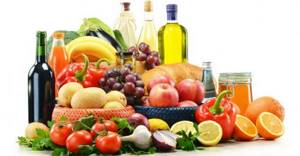
Reviews about diet 10
Many people who have tried the tenth table diet speak positively about it. You can include a huge number of healthy and tasty foods in your diet that will make your diet balanced. Table 10, dietary nutrition, helps improve the general condition of the human body, improves metabolic processes, normalizes blood pressure and the amount of cholesterol in the blood. Positively affects the functioning of the cardiovascular system. Among the negative aspects of this diet, the absence of salty foods and confectionery products is noted.
Share on social media networks:
Rate the material:
No ratings
Ilona Ganshina
02.10.2018
7015
0
Found a mistake? Select it and press Ctrl+Enter
Report a bug
Similar materials

Therapeutic diet. Table No. 14 according to Pevzner. Products, menu
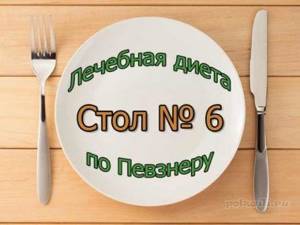
Therapeutic diet. Table No. 6 according to Pevzner. Products, menu

Therapeutic diet. Table No. 4, 4A, 4B according to Pevzner. Products, menu
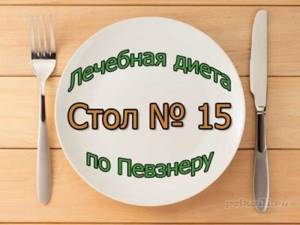
Therapeutic diet. Table No. 15 according to Pevzner. Products, menus, recipes

Therapeutic diet. Table No. 1 (1A and 1B) according to Pevzner. Products, menu
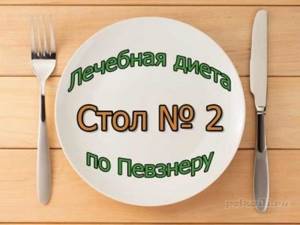
Foods to lower cholesterol
Natural freshly squeezed juices are good at cleaning blood vessels from cholesterol deposits and plaques. They are squeezed from the stem and root of celery, carrots, green apples, beets, cucumbers, white and red cabbage, and oranges.
Juices should be consumed in a mixture with each other, if necessary, sweetened with honey or diluted with water. It’s good to make smoothies from these same products; they have the same beneficial effect, but at the same time retain the fiber.
The following foods help lower blood cholesterol:
- Avocado (it is added to salads, especially in combination with fish and seafood; the pulp is spread on bread instead of butter, supplemented with a leaf of lettuce, a slice of cheese or cucumber);

- Nuts, especially pine nuts, pistachios and almonds;
- Bran;
- Seeds – sunflower, flax, pumpkin;
- Berries – chokeberry, red grapes, cranberries, lingonberries, blueberries, all varieties of currants,
- Greens - lettuce, spinach, parsley, dill, cilantro;
- Pomegranate.
It is believed that purple, green and red vegetables, fruits and berries have a beneficial effect on the condition of blood vessels, but medical laboratory studies have been carried out only on some of them. Therefore, it is unfounded to claim that all fruits of such colors reduce cholesterol and strengthen blood vessels and the heart.



